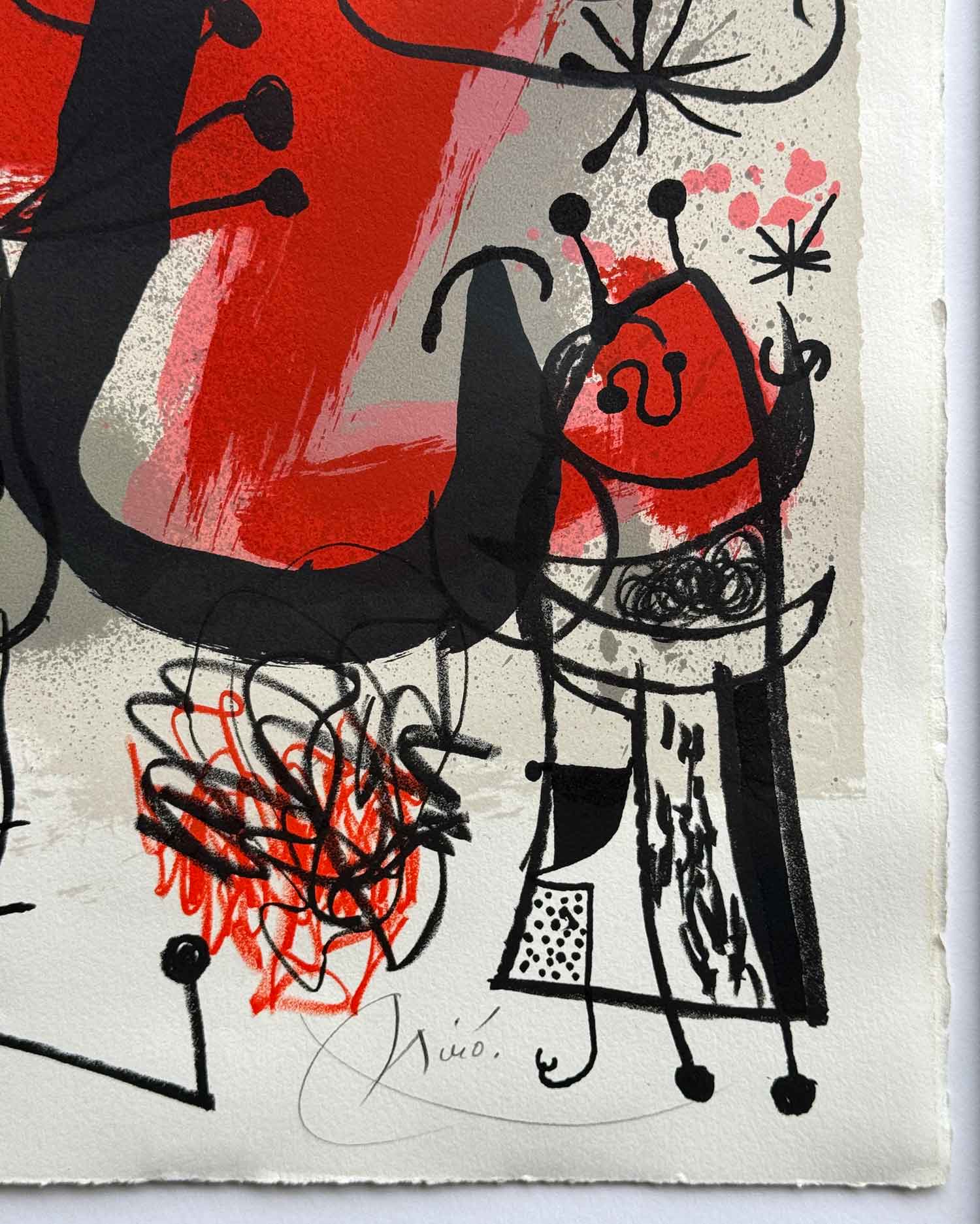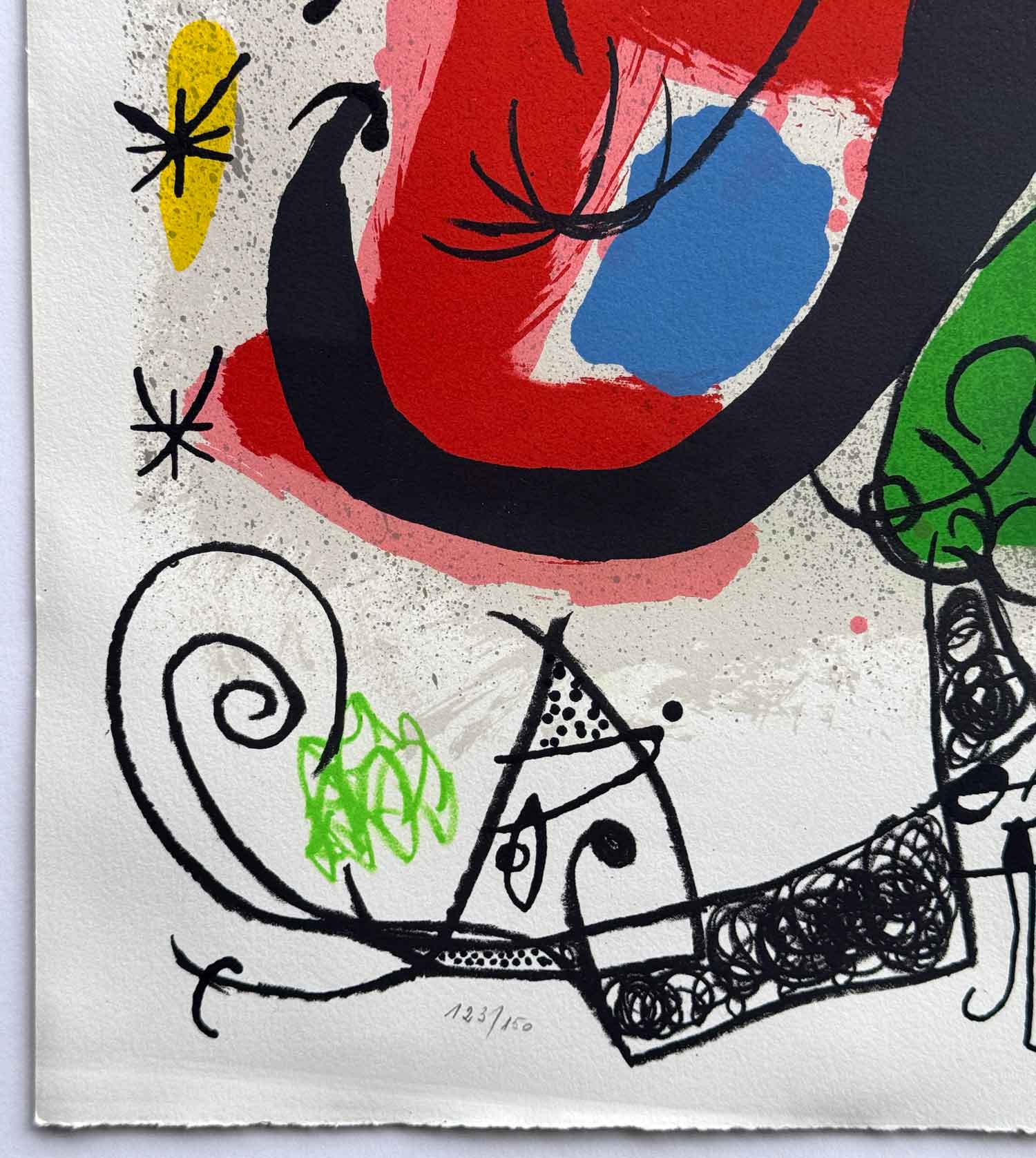Description
Joan Miró (1893 – 1983) – Le Lézard aux Plumes d’Or
Signed Limited Edition Lithograph – Le Lézard aux Plumes d’Or
Signed Bottom Right in pencil – Edition of only 150.
Painting Size – 65 x 51cm. Framed Size – 100 x 86cm
Supplied in high quality frame – with Museum Glass.
Joan Miró (1893 – 1983) – Le Lézard aux Plumes d’Or
___________________________________________
Joan Miró: A Visionary Spanish Artist
Early Life and Artistic Beginnings
Joan Miró i Ferrà (April 20, 1893 – December 25, 1983) was born in Barcelona’s Barri Gòtic to a goldsmith and watchmaker family. Initially, he studied at the Cercle Artístic de Sant Lluc. In 1918, he held his first solo exhibition at Galeries Dalmau; however, his work faced ridicule and defacement.
Inspired by Fauve and Cubist exhibitions, Miró felt drawn to the Montparnasse arts community. Consequently, he moved to Paris in 1920, yet he faithfully returned to Catalonia each summer.
Developing a Unique Artistic Style
In Paris, Joan Miró crafted his distinctive style, featuring organic forms, flattened picture planes, and sharp lines. For example, under the influence of poets and writers, he explored Surrealism and Dada, particularly through automatism and symbolic imagery. Nevertheless, Miró resisted strict categorization, rejecting alignment with any single art movement during the inter-war period. Thus, his child-like imagery vividly reflected his fascination with the unconscious mind and his deep Catalan heritage.
Mental Health and Creative Expression
Miró’s personal writings reveal multiple struggles with depression. As a result, he viewed painting as a therapeutic outlet. Therefore, his vibrant, expressive works often blended Fauvism and Expressionism, showcasing a profound connection between his mental health and artistic creations.
Rejecting Traditional Art Norms
From the 1930s, Joan Miró criticized conventional painting methods, associating them with bourgeois propaganda. Furthermore, his famous phrase, the “assassination of painting,” expressed his disdain for art serving the wealthy elite. In contrast, he dismissed art critics, arguing they prioritized philosophical theories over genuine appreciation.
Global Influence and Legacy
Joan Miró’s innovative style gained international acclaim, influencing artists like Alexander Calder, Robert Motherwell, and Jackson Pollock. Additionally, his lyrical abstractions and bold colours inspired modern designers like Paul Rand and contemporary painters like Helen Frankenthaler. Ultimately, Miró’s work remains a powerful testament to his Catalan pride and fearless creativity, shaping surrealist art and modern design.










